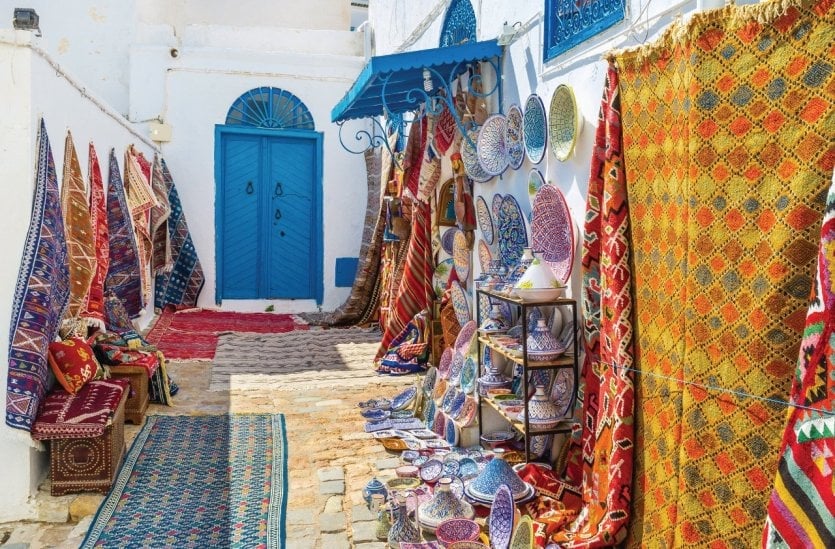
Just a few hours' flight from France, Tunisia is a jewel in the crown of Mediterranean tourism. Although the country is well known for its resorts and numerous attractions, it also harbors little-known treasures that will pleasantly surprise travelers. Off the beaten track, Tunisia offers unique experiences, where you can soak up the scents, colors and cultural richness of a land steeped in history and endowed with incredibly diverse landscapes. From the mountains of the north to the desert expanses of the south, every corner of this country tells a different story. Le Petit Futé guides you through 19 must-see sites in Tunisia, each representing a particular facet of this fascinating country, combining age-old traditions and modernity. Find Tunisia in our Top 10 sun destinations less than 3 hours' flight from Paris!
1- Hammamet and its nightlife
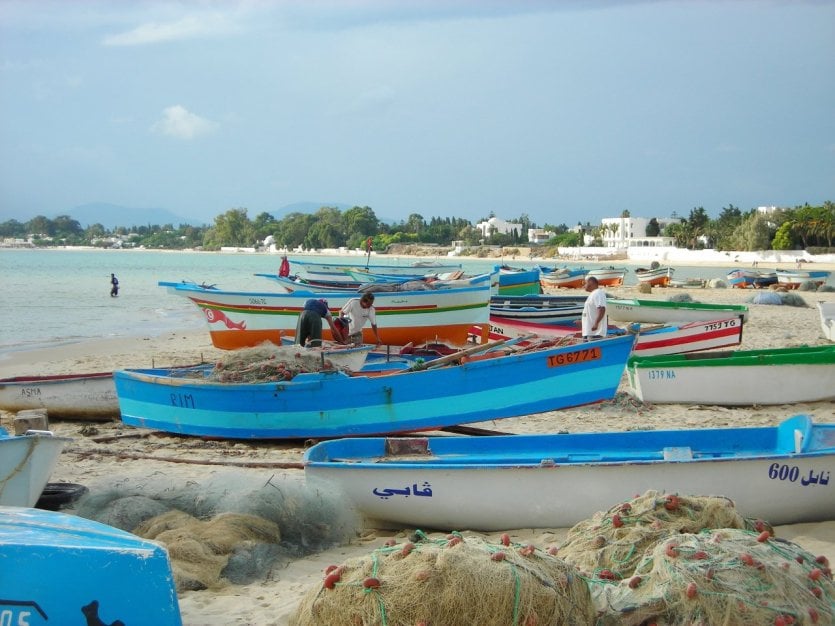
Since the 1960s, Hammamet has been one of Tunisia's favorite destinations for travelers. With its dream beaches and Mediterranean climate, this small town south of Cap Bon has everything to inspire idleness. Strolling through the well-preserved medina, with its white houses and colorful gates, is a real pleasure. But the main reason to visit Hammamet is for its wild nightlife! It has the highest concentration of bars, discos and cafés in the country.
2- Djerba, the surprising
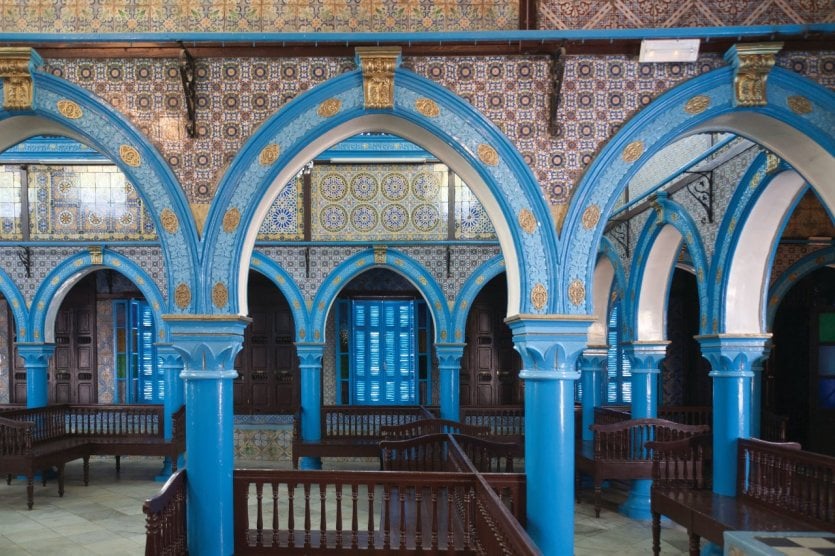
With its island charm, Djerba has captured the hearts of many a traveller... Perhaps a little too much, given the numerous vacation clubs and luxury hotels along its coastline. But Djerba is well worth the detour! The best time to visit is off-season, when the beaches are less crowded and the locals are more than willing to tell you the story of their land, where, according to Ulysses, who visited during his Odyssey, honey-tasting lotus flowers grow. Djerba the mysterious has many surprises in store for us... Find Djerba in our selection of the best sun destinations to visit in September! Book your guided camel ride with visit to the Blue Lagoon !
3- Tataouine, a taste of déjà-vu
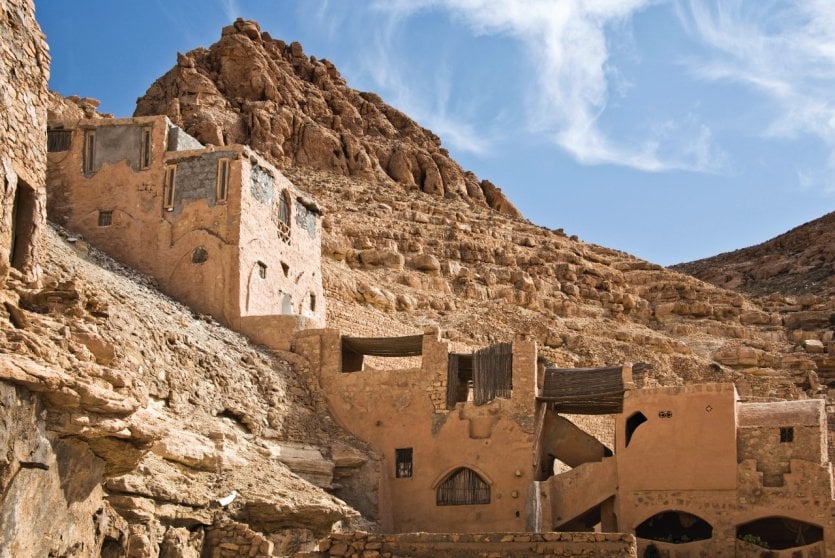
Star Wars fans will find a special resonance when they visit Tataouine in Tunisia. This town inspired George Lucas to create the iconic planet Tatooine, even if the scenes from the trilogy were not shot directly in the town itself. Rather, it was the picturesque surroundings of Tataouine that captured the essence of the famous desert planet. During your visit, you'll have the opportunity to explore the ksars, troglodyte dwellings that evoke the homes of the film's characters. In particular, you'll discover the sites that served as the setting for the slave quarters in Episode 1. This is a unique experience for fans, offering immersion in the Star Wars universe while discovering Tunisia's cultural and historical heritage. Opt for a guided tour of Tataouine and return to the time of the Berbers !
4- Dougga, the Roman
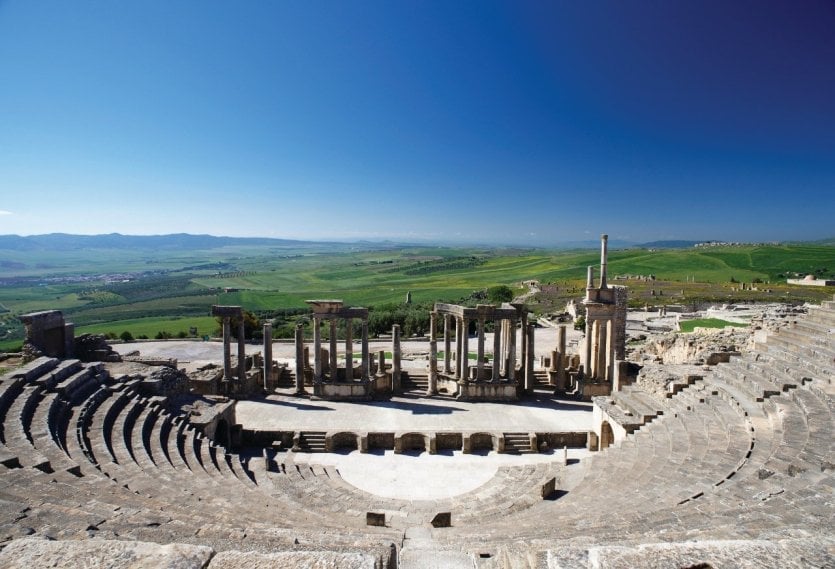
Nestled in the charming Kalled valley and perched at an altitude of 571 meters, Dougga (or Thugga) is a jewel of Roman history in Africa. This exceptionally well-preserved site covers 70 hectares and offers a real journey back in time. As you explore Dougga, you'll marvel at the majestic ruins of the capitol, the central agora of the forum, and the impressive ancient theater. Even more striking is the sophistication of the Roman infrastructure, with a drainage system that has stood the test of time for over 2,000 years. To visit Dougga is to discover the ingenuity and grandeur of Roman architecture, and to be transported into a fascinating historical past. A testament to the power and skill of the Romans, Dougga is a must-see for all history and archaeology enthusiasts.
5- Chott El Djérid, a salty air
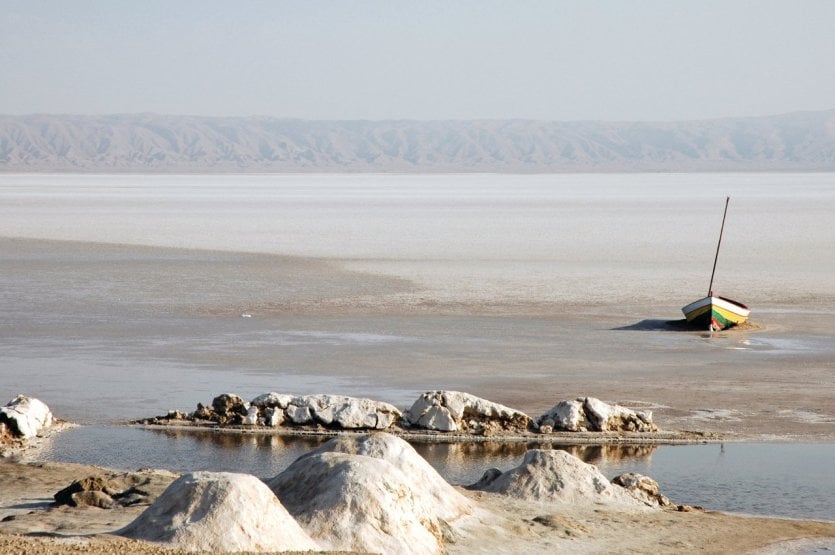
Covering more than 5,000 km², the Chott El Djérid is a vast expanse that crosses almost the entire width of southern Tunisia. In this region of North Africa, a "chott" refers to a salty depression, often partially covered by water, offering a landscape that seems to have come straight from another planet. The ground, dominated by mounds of salt, is devoid of vegetation due to a layer of clay covering it. In summer, when the waters of the lake have evaporated, Tunisians practice traditional salt harvesting, a fascinating process and know-how handed down from generation to generation. A visit to Chott El Djérid means not only discovering a unique and surreal landscape, but also observing an ancestral practice that is an integral part of Tunisia's cultural heritage.
6- Tunis, a dynamic capital
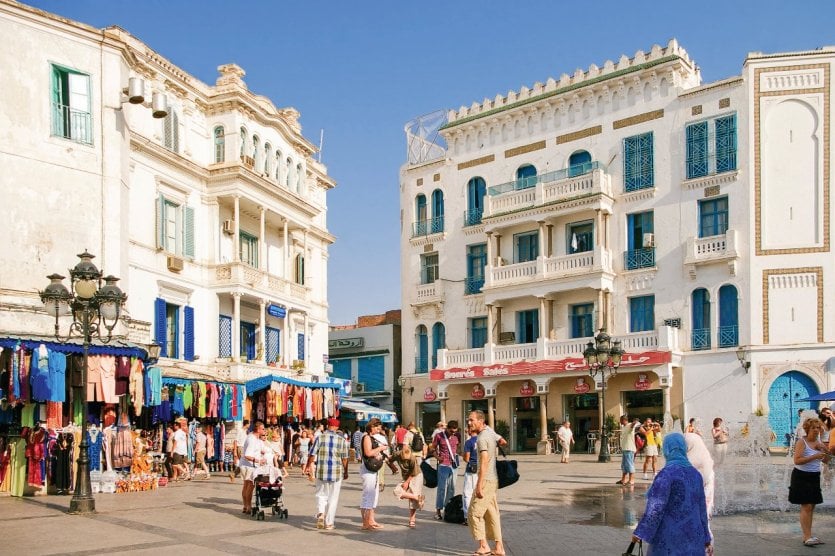
Tunis, Tunisia's vibrant capital, is a fascinating blend of modernity and tradition. This effervescent city offers a unique experience where innovation and history coexist harmoniously. To truly immerse yourself in the spirit of Tunis, you need to immerse yourself in the atmosphere of its medina (book your guided tour here). This labyrinth of alleyways, souks, patios and Arab-Muslim architecture is an invitation to discover the richness of Tunisian culture. For a deeper insight into the country's history, a visit to the Bardo Museum is a must. Home to the world's largest collection of Roman mosaics, this museum is a true national treasure, offering a fascinating glimpse into Roman times and Tunisian history. Tunis is a city where every street corner tells a story, offering a seductive blend of past and present. Tunis is also one of our 10 destinations to discover in Africa!
7- Carthage and its ruins
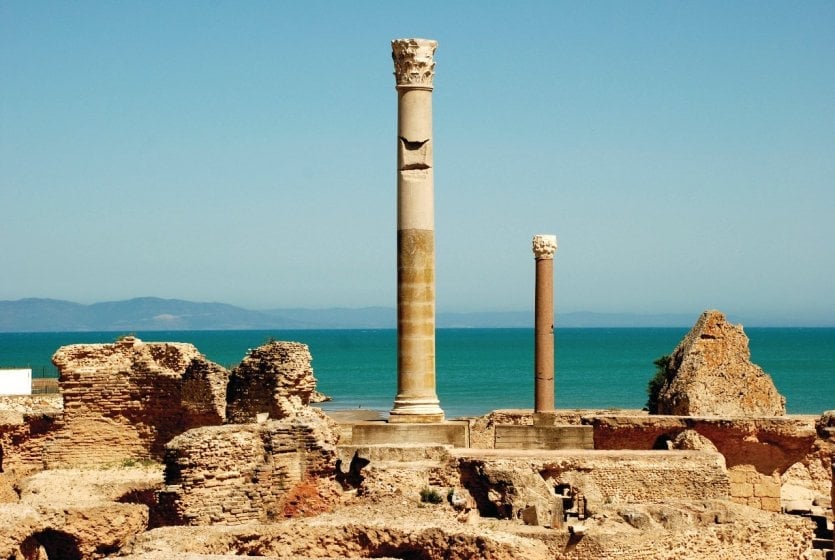
Great enemies of the Greeks and Romans, the Carthaginians have a glorious and painful past. The city, razed and then rebuilt by the Roman Empire, was unearthed in 1857 by researchers and archaeologists. Today, this upmarket suburb of Tunis is home to remains of Punic and Roman artefacts, but above all to a splendid, well-preserved site. Head to the top of the Byrsa hill to contemplate the splendor of these ruins, classified as a UNESCO World Heritage Site. Enjoy a visit to Carthage and Sidi Bou Saïd from Tunis!
8- Sidi Bou Saïd, a charming village
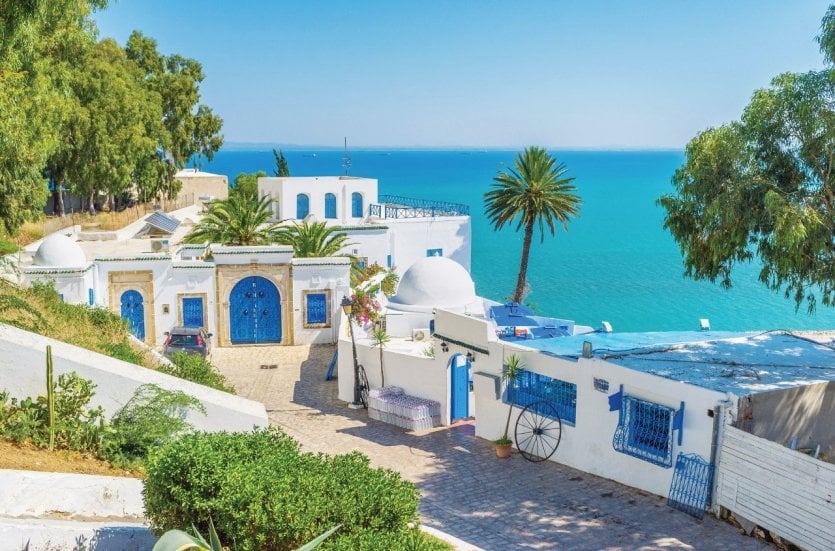
Sidi Bou Saïd, set high above the bay of Tunis, is a village reminiscent of Greece, with its white-fronted houses and blue doors and shutters. However, the essence of North Africa is omnipresent: the alleyways are lined with rose, almond and bougainvillea trees adorning the patios, while moucharabiehs, traditional architectural elements, embellish the residences. The marina, with its breathtaking views over the Mediterranean, completes the unique experience of Sidi Bou Saïd, a place where tradition and beauty meet in harmony. Sidi Bou Said is also included in our selection of the most beautiful landscapes in the Mediterranean!
9- Authentic Melloula
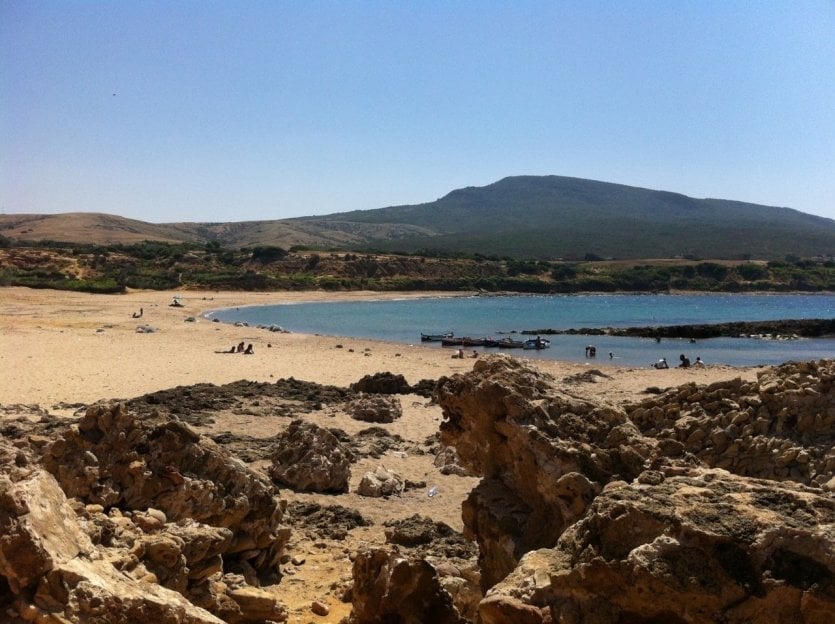
Melloula, close to the Algerian border and serving as the main border post between the two countries, is an unsuspected treasure of Tunisia, famous for its breathtaking beaches. This region, still off the beaten tourist track, is a golden opportunity to discover a preserved and authentic coastal landscape. Visitors will find a mosaic of beaches: coves, rocky stretches and fine sandy beaches stretching as far as the eye can see. Among these, the 7 km-long Serrat beach stands out. Its natural beauty, tranquility and wild character make it an ideal destination for escaping the hustle and bustle of tourism. Melloula is a little-known nugget for nature and sea lovers.
10- Ksar Ghilane, at the gateway to the Sahara
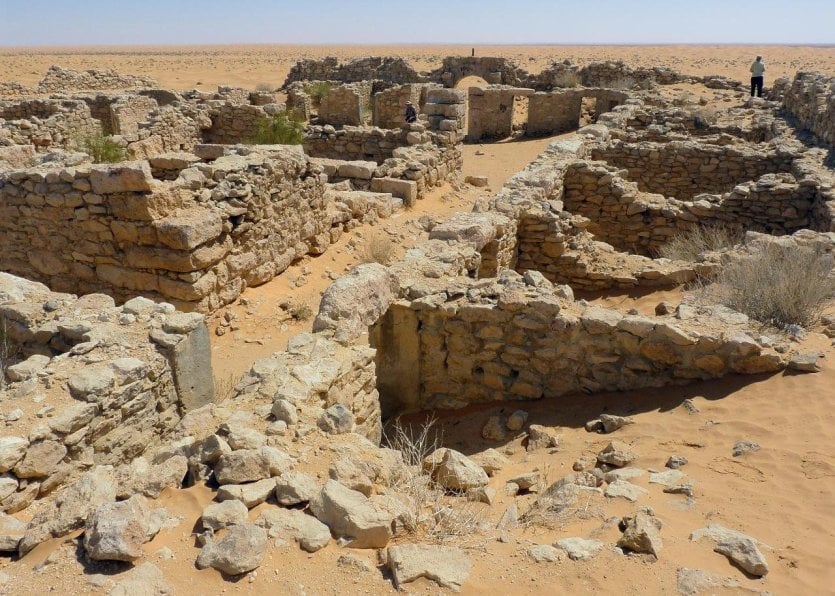
Ksar Ghilane is an escape from the oppressive heat of Tunisia's big cities. This oasis, a true natural treasure, is famous for its hot spring, whose water is tempered to 35°C all year round. The water is said to have therapeutic properties. As well as bathing, Ksar Ghilane is also the ideal starting point for unforgettable walks and camel rides, exploring the surrounding desert landscapes. The coolness offered by the oasis makes it a particularly pleasant destination during the summer months. Ksar Ghilane is the perfect place to recharge your batteries, relax and immerse yourself in the beauty of the Tunisian desert. Take advantage of the hot springs at Ksar Ghilane by booking your excursion from Djerba !
11- The Sahara Desert
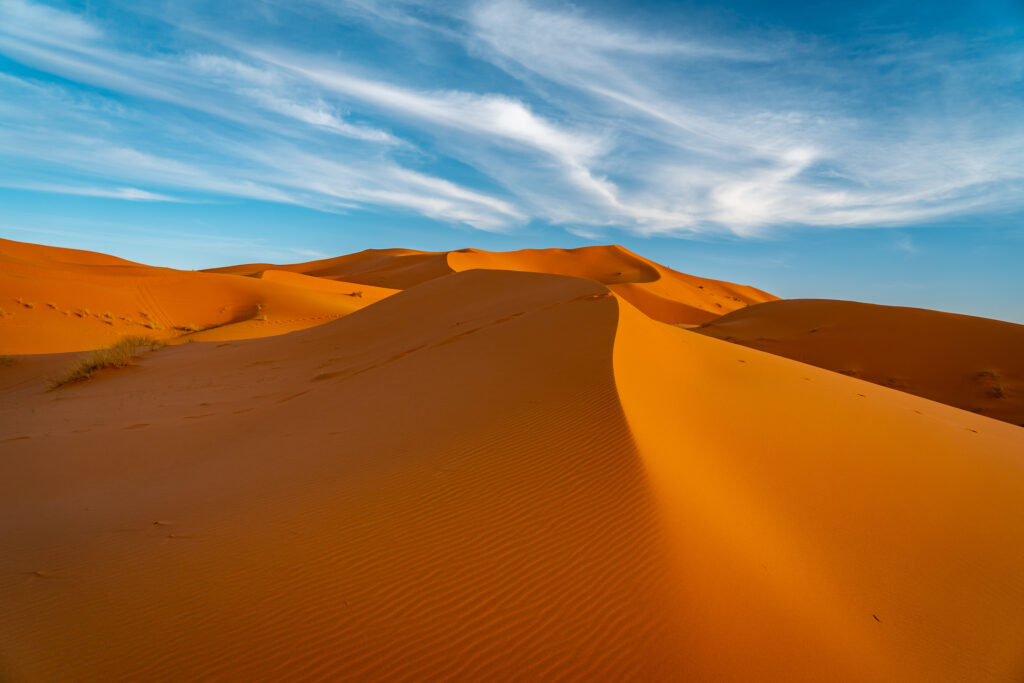
The Sahara Desert is the world's largest hot desert, stretching over several North African countries. If you're planning a visit, it's essential to be well prepared. Take plenty of water, clothing suitable for the heat during the day and the cold at night, and sun protection. Guided excursions by 4x4 or camel are the safest and most common ways to explore the Sahara. Don't underestimate the size and complexity of this desert; an experienced guide is essential. The Sahara boasts breathtaking scenery, from endless sand dunes to starry nights. It's an unforgettable experience, but one that requires good organization and respect for the natural environment. Finally, don't forget your camera to capture the unique beauty of this exceptional place.
12- Desert festivals
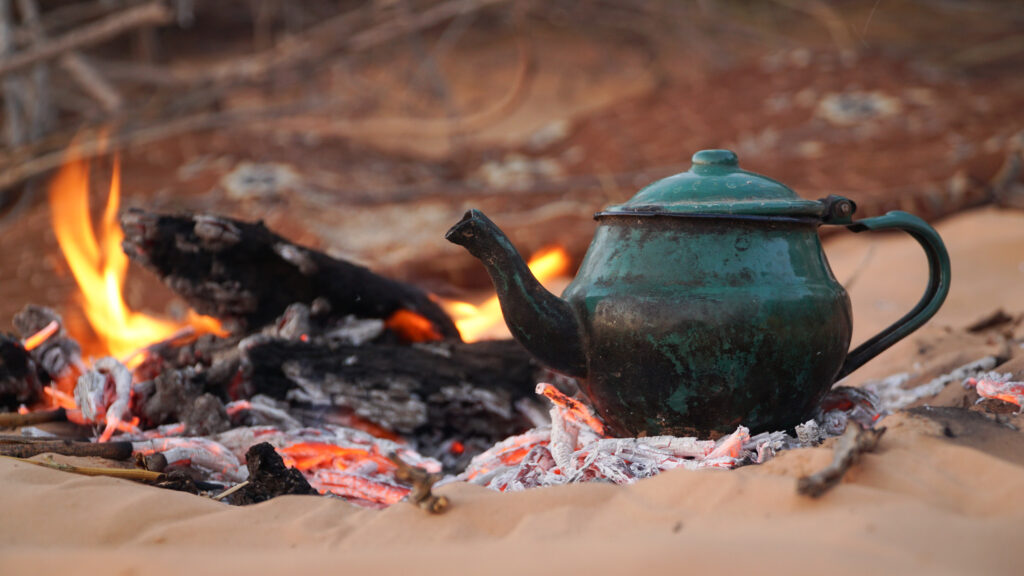
Desert festivals in Tunisia are cultural events not to be missed. They usually take place in isolated locations, so plan your transport and accommodation in advance. Dress comfortably for the desert climate, hot by day and cool by night. These festivals feature traditional music, dance and local crafts. It's a chance toexperience desert cuisine and meet nomads. Bring water, a hat and sunscreen. Festivals are the perfect way to discover authentic Berber culture.
13- Kairouan
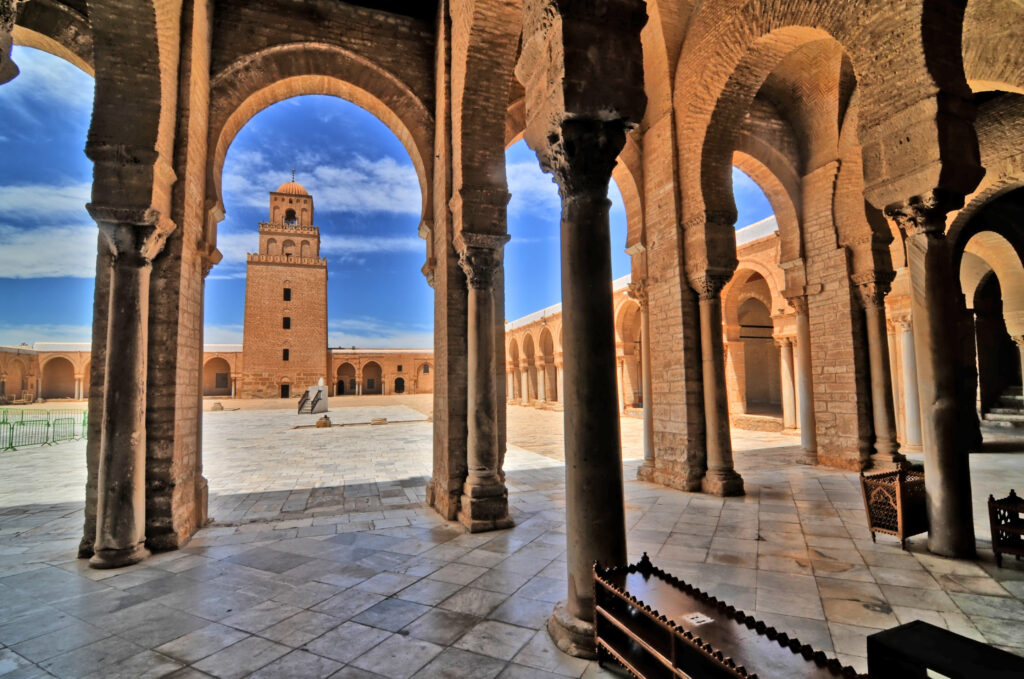
Kairouan is considered an important center of Islam. When you visit, be prepared to explore a rich cultural heritage. Dress modestly, especially if you plan to visit the Grand Mosque, a respected and sacred site. Stroll the streets of the Medina to admire the ancient architecture and local handicrafts. Don't miss a taste of Makroudh, a traditional Kairouan pastry. You can also visit the Aghlabid Basin, an ancient water reservoir and testament to historic engineering. The city is also famous for its carpets, with workshops where you can watch craftsmen at work. Finally, Kairouan, being less touristy than other Tunisian cities, offers a more authentic experience of Tunisian culture.
14- Roman amphitheaters
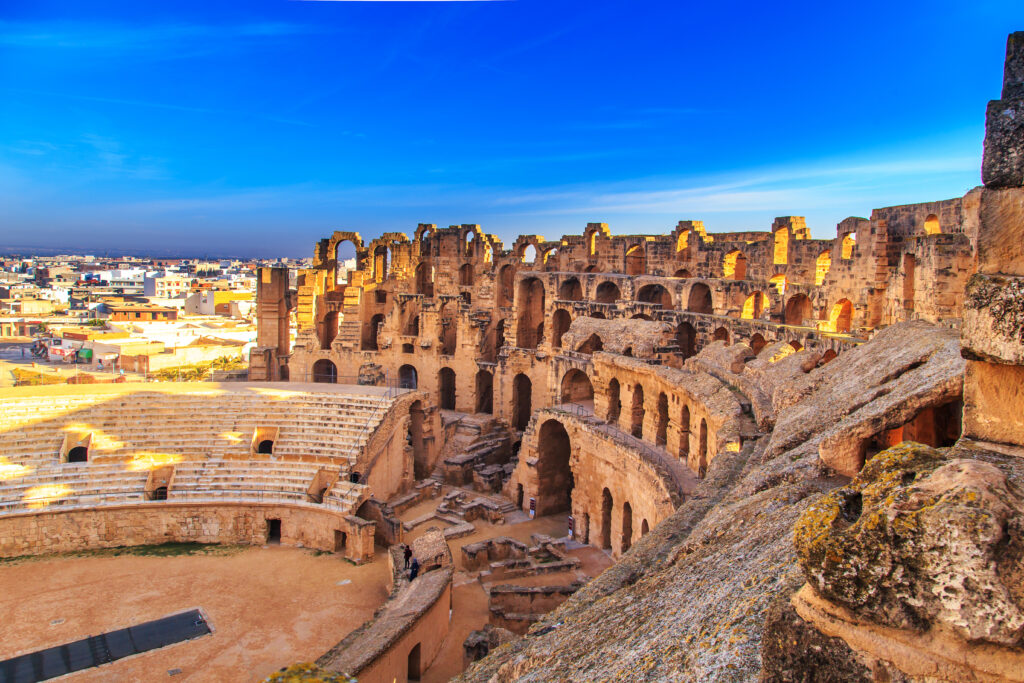
The Roman amphitheaters, spectacular vestiges of the Empire, are a must-see. When visiting them, it's advisable to wear comfortable shoes, as these sites often involve a lot of walking on uneven surfaces. A hat and sunscreen are also recommended, as these open-air structures offer little shade. Among these amphitheaters, the one at El Jem in Tunisia is particularly impressive; it is one of the best preserved in the world. Take time to explore the different parts of the amphitheater, including the stands and the arena. Local guides are often on hand to enrich your visit with historical accounts and anecdotes. Finally, early morning or late afternoon are the best times to visit, to avoid the heat and crowds.
15- Sousse
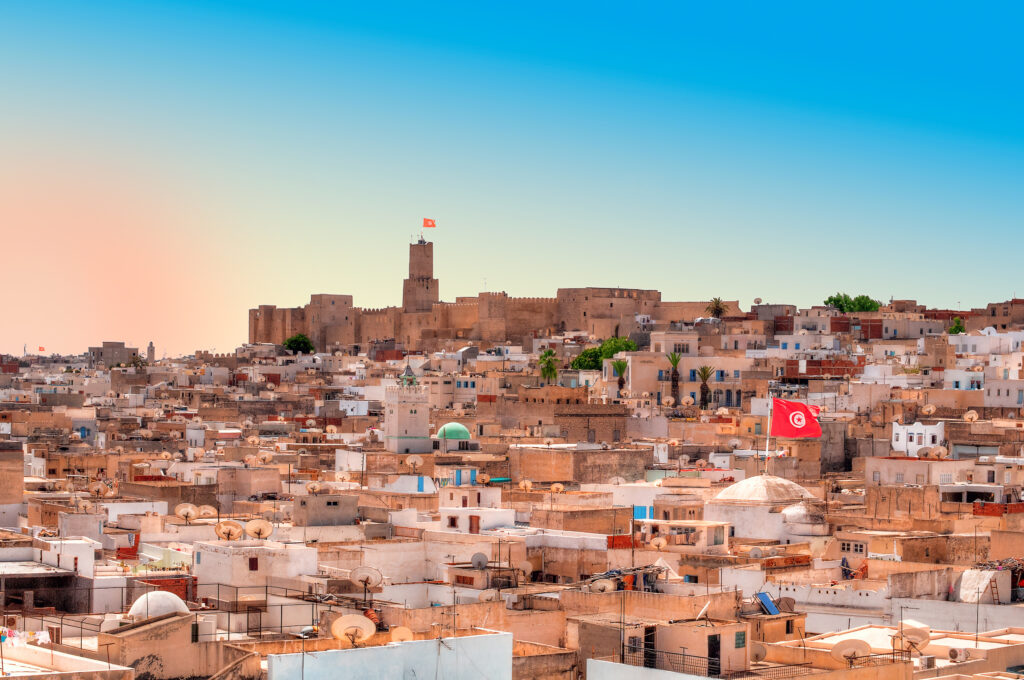
Sousse is famous for its historic Medina and beautiful beaches. When visiting, pack light clothes for the Mediterranean climate, but also something covering to visit the religious and historical sites. A stroll through the Medina will take you past traditional markets and historic buildings such as the Great Mosque. Don' t forget to visit the Ribat de Sousse, a former monastic fort with panoramic views over the city. The local gastronomy is not to be missed, with seafood specialties and traditional Tunisian dishes. Finally, for an enriching cultural experience, consider a visit to Sousse's archaeological museum, home to Roman mosaics and historical artifacts. Depart from Tunis and visit Kairouan, El Jem and Sousse by booking your excursion here !
16- Ichkeul National Park
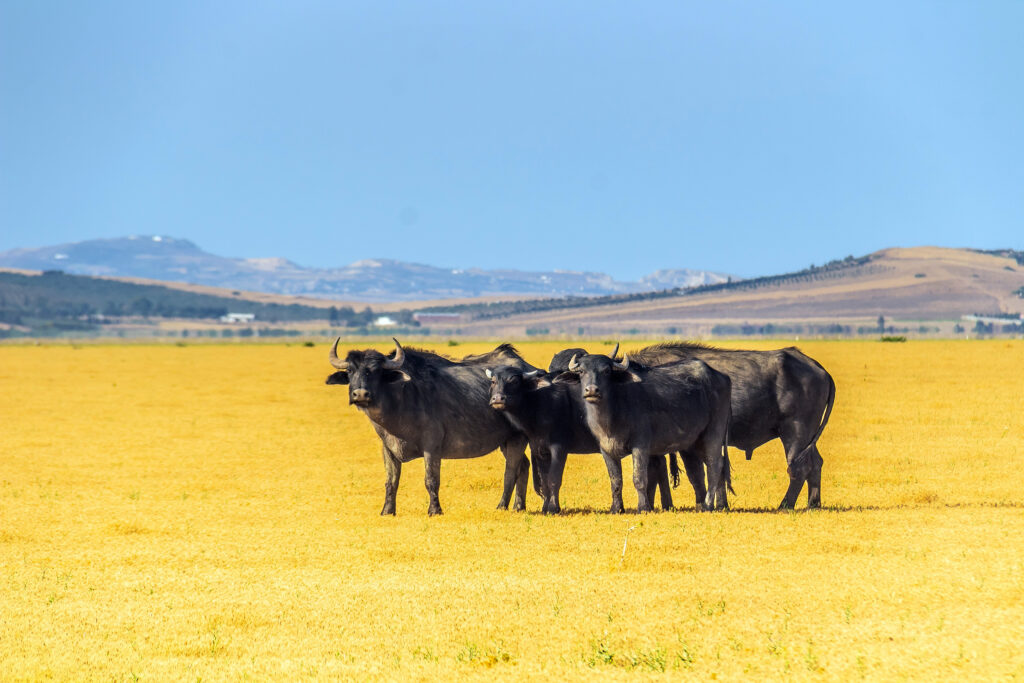
Ichkeul National Park is a haven of biodiversity, particularly famous for its birdlife. To visit it, bring clothing suitable for the changing weather, as well as comfortable shoes for walking. Don't forget binoculars and a camera, as the park is a major site for birdwatching, especially during migration. Bring water and snacks too, as on-site catering options can be limited. Respect the marked trails to protect the park's flora and fauna. A local guide can enrich your experience by sharing information about the species you observe. Finally, prepare yourself for a peaceful, natural environment, a welcome break from the hustle and bustle of Tunisia's cities.
17- Bizerte
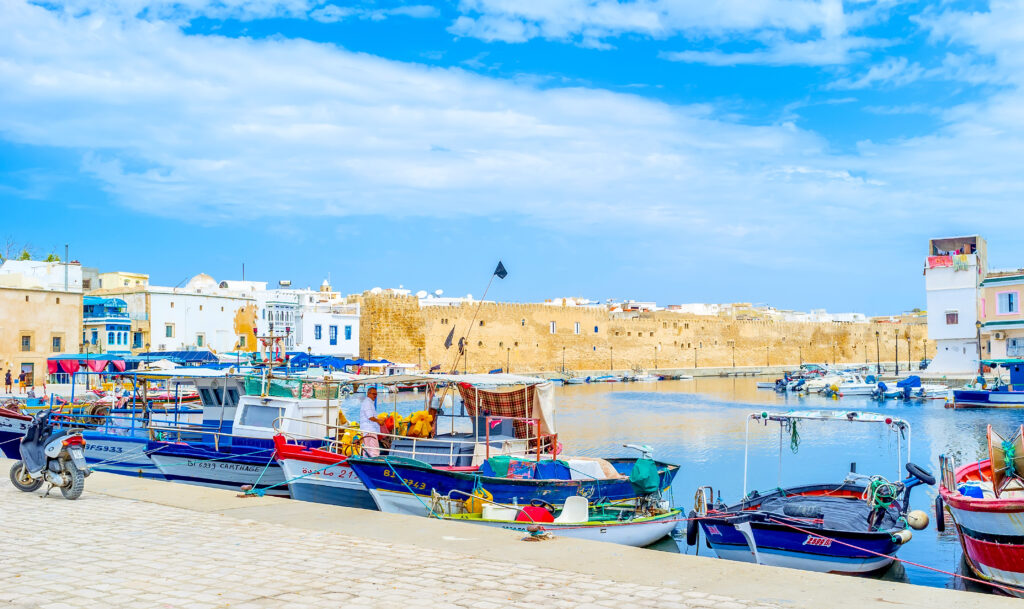
Bizerte is a charming coastal town known for its port and rich heritage. When you visit, make sure you wear clothes suited to the Mediterranean climate, with light clothes for summer and a little more covering for cooler evenings. Take a stroll along the old port and admire the colorful fishing boats, an ideal setting for beautiful photos. Don't forget to visit the Kasbah, a historic fortress overlooking the town and the sea. Bizerte's coastline also offers magnificent sandy beaches. The town is rich in history, with sites such as the Roman bridge and the ramparts. As for gastronomy, try fresh seafood and local specialties in the town's many restaurants. Finally, for a more tranquil experience, explore the small villages and natural landscapes around Bizerte.
Discover other destinations in our selection of 6 destinations for budget vacations or 11 destinations where you can get away from it all without taking a plane!
What's the most beautiful place in Tunisia?
- Sidi Bou Saïd: This picturesque village of white houses and blue gates offers a breathtaking view of the Mediterranean.
- Sahara Desert: The endless sand dunes, especially near Douz or Tozeur, offer a breathtaking natural spectacle.
- Djerba: The island is famous for its white sandy beaches, turquoise waters and unique cultural heritage.
When is the best time to visit Tunisia?
- Spring (April to June): The weather is mild and pleasant, ideal for visiting historic sites and towns, and enjoying the beaches without the summer crowds.
- Summer (July to August) : Very hot, especially in the south. This is the peak tourist season, so expect more people on the beaches and at the tourist sites.
- Autumn (September to November): Similar to spring, with milder temperatures and fewer tourists. A good time to visit the desert.
- Winter (December to March): Cooler, especially in the north, with some rainfall. Fewer tourists and lower prices, but some attractions may be closed.
What to do in Tunisia in January?
Discover historical sites:
- Carthage: Explore the ruins of the ancient Punic and Roman city, a UNESCO World Heritage Site.
- Tunis and its medina: Visit the capital with its well-preserved medina, lively souks and the Bardo Museum, rich in Roman mosaics.
Desert excursions:
- Take advantage of the cooler temperatures to explore the Sahara, whether by 4x4, camel or hiking. Destinations like Douz, known as the "gateway to the Sahara", are a must.
Coastal relaxation:
- Although swimming can be chilly, coastal towns like Sidi Bou Said, Hammamet and Monastir offer beautiful walks and magnificent views.
What to visit in Tunisia in a week
Day 1-2: Tunis
- Tunis Medina: Explore the ancient streets, souks and historic monuments.
- Bardo Museum: Admire collections of Roman art and mosaics.
- Carthage archaeological site: Discover the remains of the ancient Punic and Roman city.
Day 3: Sidi Bou Said and Cap Bon
- Sidi Bou Said: Visit this charming village of white and blue houses.
- Nabeul or Hammamet: Explore these coastal towns with their beautiful beaches and crafts.
Day 4-5: Southern Tunisia
- Matmata: Discover troglodyte houses.
- Douz: Gateway to the Sahara, ideal for a desert excursion.
Day 6: Kairouan and El Jem
- Kairouan: Visit the Great Mosque and the medina, an important center of Islam.
- El Jem: Admire the impressive Roman amphitheatre.
Day 7: Return to Tunis
- Use this day for anything you didn't get to see in Tunis, or for souvenir shopping.
If you're tempted by a trip to Tunisia, book your travel insurance here at a discounted rate and leave with peace of mind!


